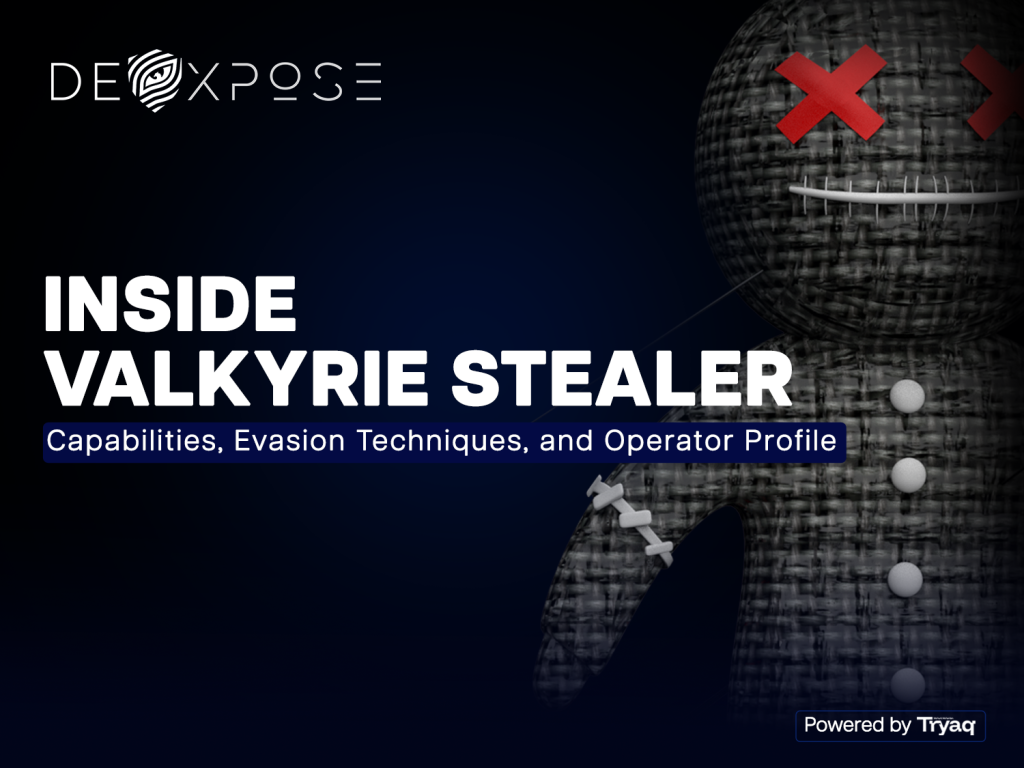Offensive Security is a proactive discipline that affects real attacker behavior to find and uncover threats before they become breaches. In this post, you’ll learn how systematic discovery, targeted exploitation, and contextual risk analysis uncover hidden exposures across cloud, on-premises, and third-party ecosystems. The techniques and processes described here are practical, repeatable, and aligned with Offensive Security principles, helping security leaders convert findings into measurable improvements.
Wha is Offensive Security?
Offensive Security describes controlled, ethical activities such as penetration testing, red teaming, and attack simulation that emulate the behavior of malicious actors. The goal is not merely to generate a list of vulnerabilities, but to reveal realistic attack paths, prioritize fixes by business impact, and validate detection and response capabilities.
Key components
- Reconnaissance: Mapping public and semi-public footprints that attackers use.
- Active testing: Targeted attempts to exploit weaknesses safely.
- Detection validation: Ensuring security tools and teams can spot and respond to real attacks.
Why proactive testing uncovers what passive tools miss
Passive defenses (firewalls, basic scanners, and endpoint agents) are crucial, but they can miss chained attacks, business-logic flaws, and exposures hiding in unusual places. Dark Web Monitoring services add an essential layer by revealing external risks that traditional tools cannot see. Offensive testing goes beyond signatures and CVE lists: it follows how an attacker would think about target selection, foothold, lateral movement, and exfiltration, then measures the organization’s resilience at each step.
A repeatable methodology for finding hidden threats
Below is a practical, repeatable process used by experienced offensive teams. Each phase uncovers different classes of hidden risk and contributes to a prioritized remediation plan.
Reconnaissance builds the attacker’s map
Reconnaissance starts with openly available information: DNS records, employee profiles, cloud metadata, and public code repositories. Beyond that, effective programs include a Dark Web Scan to discover leaked credentials or data dumps that mainstream search engines never index.
- Scan public sources and passive DNS for forgotten hosts.
- Enumerate cloud buckets, API endpoints, and legacy systems.
- Add a Dark Web Scan to find stolen data that signals prior or future attacks.
Deep Web Scanning and targeted intelligence
Deep Web Scanning widens the net to include forums, paste sites, and underground marketplaces. This layer often surfaces early indicators, credential lists, attacker chatter, and tooling that foreshadow targeted campaigns.
- Combine automated scraping with human analyst review to separate noise from credible threats.
- Cross-reference leaked identifiers with inner identity stores to prioritize password resets and MFA enforcement.
Vulnerability discovery automated plus manual
Automated scanners are efficient at finding known flaws, but manual review finds logic errors and chained misconfigurations. A formal Security Vulnerability Assessment blends both automation for scale and human expertise for context and exploit validation.
- Use authenticated scans for deeper coverage of applications and services
- Validate high- and critical-severity findings manually to avoid false positives.
- Produce proof-of-concept evidence that shows real-world impact and simplifies remediation decisions.
Exploitation and proof of impact
When permitted, controlled exploitation demonstrates how a vulnerability can be abused. Proofs of concept demonstrate the exact business risks of data access, privilege escalation, or service disruption, and motivate timely remediation.
- Focus on reproducible, low-impact proofs that clearly show business consequences.
- Capture the attack path to illustrate how an initial foothold can lead to critical data exposure.
Lateral movement following the attack chain
A single compromised account or misconfigured service is seldom the end goal. Offensive testers map lateral movement: credential reuse, token theft, misapplied permissions, and pivot points that lead to sensitive systems.
- Simulate credential harvesting, pass-the-hash, and token replay to reveal escalation paths.
- Emphasize detection gaps: what alerts should have fired but didn’t?
Data exfiltration and persistence checks
Understanding whether an attacker can persist or siphon data is essential. Test scenarios include staged exfiltration and persistence mechanisms to determine how long an attacker could remain undetected.
- Validate the completeness of logging and network egress controls.
- Test alerting thresholds and the speed of investigative workflows.
External visibility: why the internet’s underbelly matters
Hidden threats often originate outside your perimeter. Monitoring external exposures is a core part of modern offensive programs.
Dark Web breach Monitoring and evidence-driven priority
Dark Web breach monitoring flags exposed credentials, internal documents, or leaked databases. When paired with internal telemetry, these signals enable urgent, targeted remediation (for example, forcing password resets or revoking service tokens).
- Prioritize leaks that match active accounts or privileged emails.
- Treat Dark Web findings as early warning, not automatic panic: validate before wide action.
Tools and tradeoffs: paid vs. free Dark Web Monitoring tools

There are many Dark Web Monitoring tools; some vendors offer comprehensive indexing and contextual review support, while free Dark Web Monitoring tools provide lightweight visibility for smaller budgets. Free options can uncover obvious leaks, but paid services typically reduce false positives and include investigative support.
- Use free tools for baseline detection; escalate to paid services for richer context on high-value exposures.
- Ensure any tool can integrate with your incident response workflows for timely mitigation.
Integrating offensive findings into security operations
Testing is only valuable if it leads to change. Successful programs align technical findings with operational processes.
Prioritization and remediation workflows
Convert technical findings into prioritized action items tied to business impact. A mature workflow includes owners, deadlines, and validation steps.
- Map findings to risk appetite and compliance requirements.
- Track remediation progress and re-test to confirm closure.
Detection improvement and playbook updates
Use offensive scenarios within a Digital Risk Protection framework to refine detection content, SIEM rules, EDR signatures, and alert thresholds, and to update incident response playbooks.
- Inject simulated telemetry into monitoring tools to ensure coverage.
- Run tabletop exercises anchored on test outcomes to improve human response.
Measuring program effectiveness
Metrics should reflect progress and not obscure it with vanity numbers.
- Time-to-detect during simulations shows detection maturity.
- Remediation closure rate for critical items links testing to reduced exposure.
- Reduction in exploitable attack paths quantifies surface hardening over time.
Tie metrics to business outcomes, reduce downtime, lower incident cost, and improve audit posture to secure ongoing investment.
Case study: anonymized example of discovery to remediation
A mid-size e-commerce company faced intermittent fraud and unexplained unauthorized access. An offensive engagement combined Deep Web Scanning, targeted application testing, and lateral movement exercises.
- Deep Web Scanning revealed credential dumps containing employee logins.
- Testers exploited a forgotten admin interface to obtain service tokens and moved to a CRM server.
- The team prioritized MFA for administrative accounts, rotated tokens, and added targeted detection rules, closing the main attack path within weeks.
This practical flow shows how external monitoring plus hands-on testing uncovers real, fixable threats.
Tools, frameworks, and techniques that uncover hidden exposures
A robust offensive toolkit combines open-source utilities, commercial platforms, and custom scripts. Common elements include:
- Recon frameworks for footprinting and asset discovery.
- Authenticated scanners and manual review tools for vulnerability validation.
- Threat intelligence and Dark Web Monitoring tools for external visibility.
- Attack emulation frameworks to validate controls and detection pipelines.
Selecting tools should be informed by the environment, scale, and the level of analyst expertise available.
Common pitfalls and how to avoid them
- Checkbox testing: Treating tests as compliance obligations produces little long-term value. Ensure remediation ownership and verification.
- Over-reliance on automation: Scanners are efficient but miss logic flaws; always include manual validation.
- Ignoring contextual intelligence: Without correlating external indicators, teams may miss precursor signals that signal imminent attack.
Avoid these by combining automated breadth with manual depth and tying outputs to operational remediation.
Scaling offensive programs across the enterprise
Large environments require a mix of continuous scanning, periodic red teaming, and focused penetration tests.
- Automate routine checks and integrate findings into ticketing and CI/CD.
- Reserve human-led red teams for high-value prey and complex scenarios.
- Use a risk-based cadence: critical systems get more frequent, deeper assessments.
Legal, ethical, and governance considerations
Offensive activities must be authorized, scoped, and documented. Clear rules of engagement prevent accidental outages and legal exposure.
- Obtain executive sign-off and legal review before starting tests.
- Define acceptable impact levels and escalation procedures.
- Keep detailed logs and evidence to support follow-up actions and audits.
Building a resilient posture with offensive insights
The ultimate value of offensive work is not the report itself but the security outcomes it produces: fewer exploitable paths, faster detection, stronger incident response, and improved Reputation Management across the organization.
From testing to continuous improvement
- Embed remedial actions into development pipelines and change management.
- Translate technical findings into policy and configuration standards.
- Repeat tests on a schedule that matches your organization’s change velocity.
This transition turns episodic testing into sustainable resilience.
Practical checklist: start an effective offensive program

- Inventory internet-exposed assets and shadow IT.
- Add a Dark Web Scan and Deep Web Scanning to your intelligence feeds.
- Run a baseline Security Vulnerability Assessment with manual validation.
- Implement prioritized remediation workflows and re-test.
- Tune the content for detection and conduct regular tabletop exercises.
Conclusion
How Offensive Security identifies hidden cyber threats is grounded in realism: emulate attackers, enrich findings with external intelligence, validate exploitability, and convert discoveries into prioritized fixes. By combining external visibility as Dark Web breach Monitoring and Deep Web scanning with thorough Security Vulnerability Assessment and hands-on exploitation, security teams find the blind spots that passive tools miss. When offensive insights are operationalized into remediation and detection improvements, organizations move from reactive defense to disciplined, Proactive Cybersecurity.
FAQs
What makes offensive testing different from routine vulnerability scans?
Offensive testing validates exploitability and business impact through manual techniques, while scans automatically list potential issues. The hands-on approach reduces false positives and uncovers logic flaws.
Can small teams use dark web monitoring effectively?
Yes, start with lightweight Dark Web Monitoring tools, prioritize high-value matches, and escalate suspicious findings to a focused investigation. Even basic monitoring reduces exposure time for leaked credentials.
How often should we run a Security Vulnerability Assessment?
At a minimum, annually for critical systems; more frequent checks for dynamic environments; quarterly or continuous scanning works well for cloud and fast-changing assets.
Does offensive work risk disrupting production systems?
With proper scoping, authorization, and low-impact proofs, risk is minimized. Define acceptable impact, use staging where possible, and have rollback plans and communication channels ready.
How do we measure if offensive programs are successful?
Track remediation closure rates for critical findings, time-to-detect during simulations, and the reduction in exploitable attack paths; tie these metrics to business risk reduction for leadership visibility.







